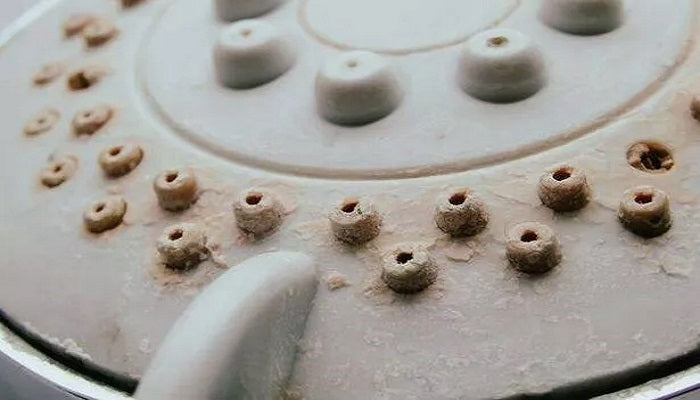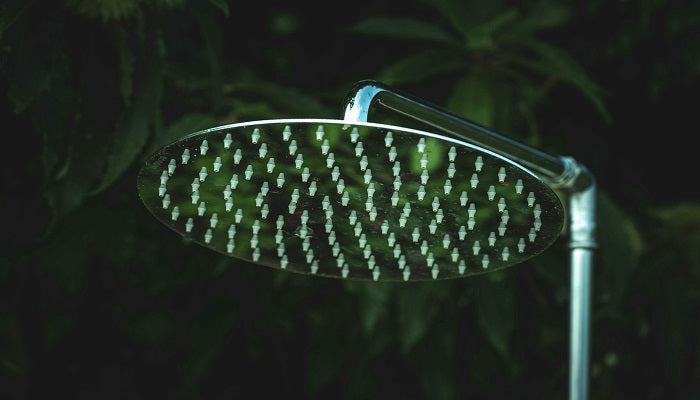Have you ever had this happen? Just a few days after scrubbing your bathroom, water spots show up again on the glass, grout lines start turning black, and a musty smell lingers in the air. Because showers are always damp and exposed to steam, they quickly collect mineral deposits, soap scum, mold, and grime. Not only does this ruin the look of your bathroom, but it can also create a breeding ground for bacteria.
The good news: you don’t need to spend hours deep cleaning. With a few simple habits, some regular upkeep, and eco-friendly tricks, you can keep your bathroom sparkling clean for the long run—less scrubbing, more comfort.
Daily Low-Effort Habits to Keep Shower Clean
1. Remove moisture
After each shower, run a squeegee or rubber broom over the walls, floor, and door. Follow up with a quick towel wipe to get rid of leftover moisture and stop mold before it starts.
2. Maintain Ventilation
Crack open a window before you shower, or switch on the exhaust fan during and for 15–20 minutes afterward. Fresh air circulation is key to cutting down on odors and mold growth.
3. Rinse the Walls
Give the walls and tub a quick rinse with hot water after each shower. This washes away soap before it dries and saves you scrubbing time later.
4. Try a DIY no-rinse spray
Mix equal parts white vinegar and water in a spray bottle, add a few drops of dish soap, and lightly mist your shower after use. No rinsing needed—just spray and walk away.

Key Cleaning Tasks
1. Glass and Mirrors
Wipe with diluted vinegar solution or eco-friendly cleaner.
2. Tiles
Use a magic eraser or a diluted vinegar solution (but skip vinegar on marble or travertine—follow the manufacturer’s care instructions for those). To reduce mineral buildup on tiles, glass doors, and fixtures, think about installing a filtered showerhead—it lowers minerals in the water, making cleaning much easier.
3. Drains
Clear hair and debris promptly to prevent clogs.
4. Grout Cleaning
Grout is mold’s favorite hiding spot. Scrub every few weeks with a 1:5 vinegar-water mix. Avoid bleach—it weakens the grout and makes mold return faster.
5. Showerheads and Sprayers
Mold can grow inside showerheads too, affecting water flow and cleanliness. Clean them monthly, or better yet, install a filtered showerhead. It softens water, filters out impurities, and prevents mineral buildup from the start—less cleaning for you. Just swap the filter cartridge every three months for consistently fresh water.
Material-Specific Cleaning Methods
1. Glass Stains
For delicate materials like glass, cleaning requires softer tools. Hard brushes must be avoided. We recommend mixing equal parts vinegar and water in a spray bottle. Spray the solution, let it sit for 10 minutes, then remove stains with a soft cloth or sponge.
2. Hard Water Stains
We're all familiar with stubborn stains left on glasses after dishwasher cycles. These stains are a form of alkaline etching. They appear as water evaporates, leaving behind mineral deposits. Similar deposits may also appear on glass shower doors, tiles, and bathroom fixtures. Cleaning these stains is particularly troublesome.
To remove water spots, use a cleaner suitable for your tile type, allow sufficient dwell time, and be persistent. Multiple cleanings may be needed to eliminate the stains. If all methods fail, hire a professional. For a long-term solution, consider installing a water softener or filtered showerhead to reduce mineral buildup at the source.
3. Mold
You don't want mold in your bathroom or shower, nor do you want the hassle it brings—it can be dangerous. One way to refresh your bathroom and shower is to regrout the shower and bathtub roughly once a year. This is a fairly simple process, requiring only a tube of white silicone caulk designed for bathrooms and kitchens. If mold or mildew is more than just a spot, contact a professional first for thorough removal.
For mold on shower surfaces, spray hydrogen peroxide directly onto the affected areas. Let it sit for one hour before rinsing clean. You can attach a clean nozzle directly to the hydrogen peroxide bottle—keep the solution in its original brown container. Exposure to light degrades hydrogen peroxide. Be mindful of where and how you spray, as hydrogen peroxide can bleach fabrics. Repeat if necessary. For extensive mold growth, consult a professional or re-grout the joints. The best prevention involves maintaining a clean, well-ventilated bathroom and promptly addressing early mold spots.

Tips for Keeping Your Bathroom Clean Long-Term
1. Spend 2 minutes tidying up after each shower
This saves you major cleaning hassles down the line. Simply spray the entire shower area weekly with a solution of 1 part cleaner to 10 parts water. Let it air dry after spraying.
2. Use a filtered showerhead to reduce hard water stains
Just as bright white clothes gradually turn gray or yellow when washed in mineral-rich water, tile floors and surfaces exposed to hard water can discolor. Hard water contains high levels of calcium, magnesium, and other minerals. In areas frequently exposed to water, like showers, tiles may develop white or chalky deposits. In homes with exceptionally high mineral content, limescale buildup may occur. Even in dry areas that are frequently mopped or cleaned, problems can arise due to high foot traffic and frequent use.
We highly recommend installing a filtered showerhead as your first step toward enhancing your quality of life. A filtered showerhead not only reduces the time spent cleaning showerheads but also minimizes hard water stains in the bathroom, making bathroom cleaning easier.
3. Keep storage off the floor
Put bottles on shelves or racks instead of the floor. This prevents buildup and makes cleaning faster.
Conclusion
A clean bathroom isn’t just about looks—it’s about health. Regular upkeep keeps bacteria and grime at bay, while the water quality itself plays a huge role in how easy (or hard) your bathroom is to maintain.
Hard water leaves behind limescale on tiles, glass, and showerheads, making everything harder to clean. That’s why upgrading to a filtered showerhead like the AquaNurture Filter Showerhead is a game-changer. It cuts chlorine and minerals in your water, protects your skin and hair, and helps your bathroom stay cleaner with less effort.
The formula is simple: daily habits + periodic deep cleans + prevention. Stick with this routine, and your bathroom will look fresh and inviting every single day.
Bathroom Cleaning FAQ
Q1: How often should I clean my shower?
A: Quick daily wipe-downs take just 2–3 minutes and prevent grime buildup. For deeper cleaning, aim for once every 1–2 weeks depending on how often your shower is used.
Q2: How can I prevent mold in my bathroom?
A: Keep the air moving by using an exhaust fan or opening a window during and after showers. Wipe surfaces dry, tackle small mold spots immediately, and clean grout every few weeks.
Q3: What’s the best way to remove hard water stains?
A: Use a cleaner suited for your surfaces, like a vinegar-water solution for most tiles and glass. Let it sit for several minutes and scrub with a soft cloth. For persistent stains, multiple cleanings or professional help may be needed.
Q4: Can I use vinegar on all surfaces?
A: Avoid using vinegar on marble, travertine, or other natural stone—follow the manufacturer’s cleaning instructions for these materials.
Q5: How often should I clean my showerhead?
A: At least once a month. For even easier maintenance, consider a filtered showerhead, which reduces mineral buildup and keeps water cleaner.
Q6: What is a filtered showerhead, and why should I use one?
A: A filtered showerhead removes minerals like calcium and magnesium, as well as chlorine. This helps prevent limescale, protects your skin and hair, and reduces cleaning time.








Leave a comment
This site is protected by hCaptcha and the hCaptcha Privacy Policy and Terms of Service apply.